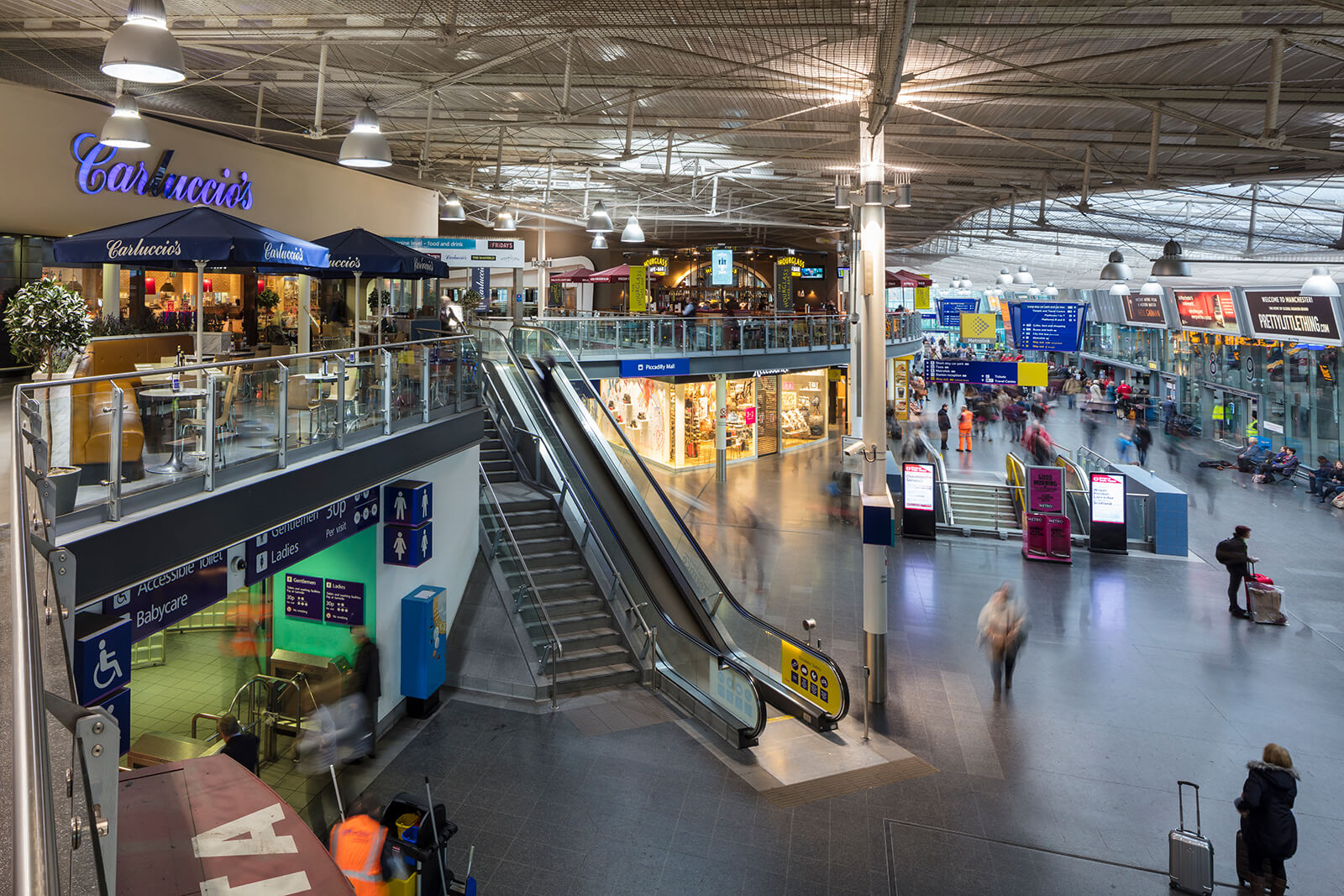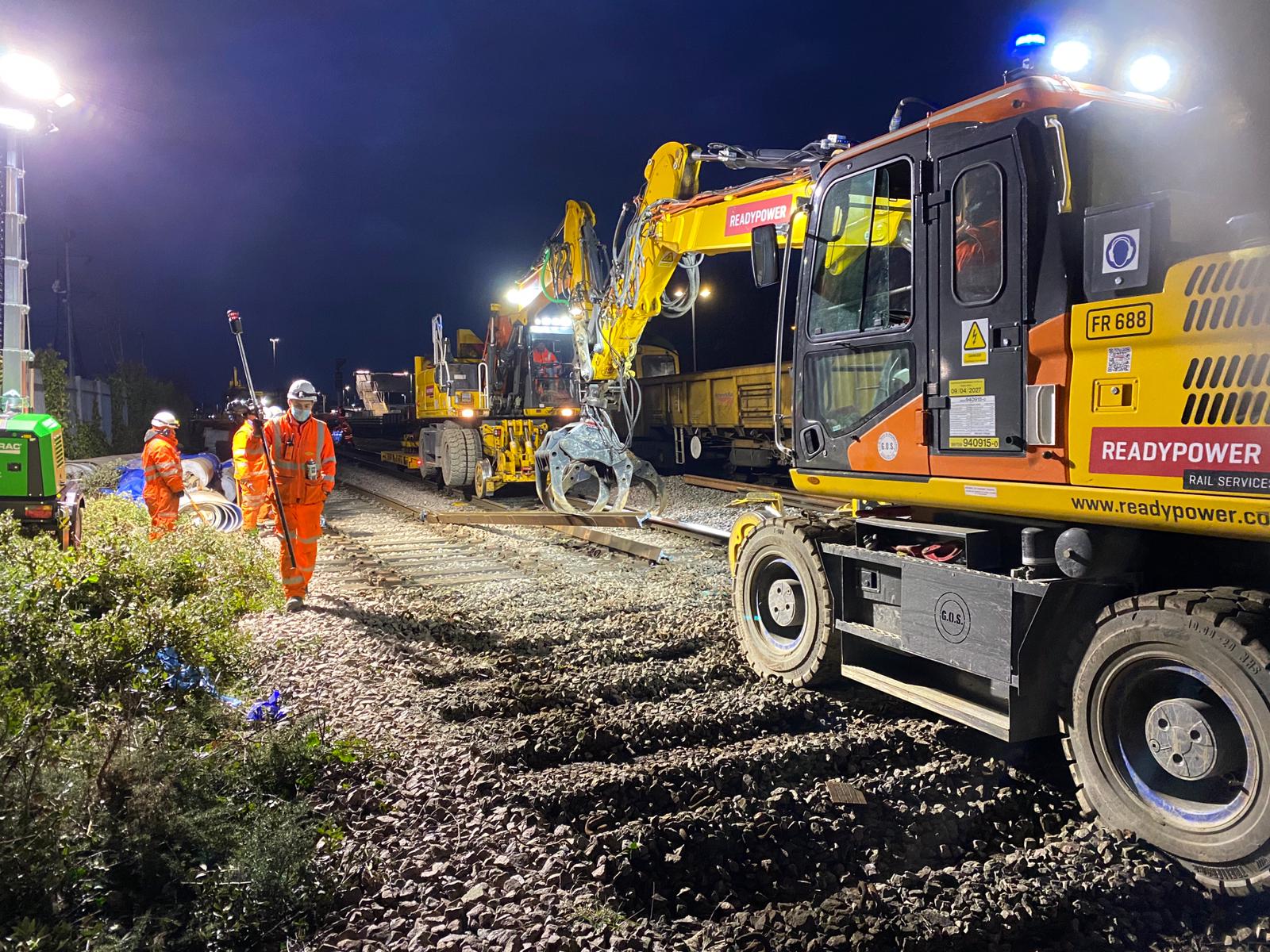Greater Manchester has been an integral part of The Great North Rail Project – multi-billion pound improvements in the north of England.
We’ve made a string of upgrades to its busiest station – Manchester Piccadilly – to improve the overall experience for passengers. In the coming months, we’ll deliver even more.
Improving the passenger experience
Upgrades in the past year have included the removal of old-fashioned waiting rooms on the station’s most crowded platforms – 13 and 14 – to create more space for passengers.
Previously, half of the shelter was home to an old toilet block and retail unit that had sat disused for almost 20 years. We’ve replaced the structure with smaller and more modern waiting rooms, which by the spring will have more seats, USB charge stations and more heating.
We’ll also complete the installation of new canopy glazing by May and will fit wind breaks and new lighting.
Meanwhile, we’re reviewing retail in the area to improve the offering for those visiting the station.

In May last year, we installed a free drinking water fountain – part of a national initiative by Network Rail.
The Great North Rail Project
Elsewhere, The Great North Rail Project is making further headway. The Manchester area now benefits from electric passenger trains that ran from Manchester Victoria to Bolton for the first time this month (February). It’s a significant milestone for the programme.
The first electric trains run from Manchester to Bolton
We’ve also just unveiled plans to upgrade all the stations on the Glossop-to-Manchester railway line. More than £1.5m of Department for Transport money will be go towards Glossop, Dinting, Broadbottom, Hattersley, Godley, Newton for Hyde, Flowery Fields, Guide Bridge and Ashburys stations.
Liverpool Lime Street’s major £140m transformation, which completed in October, has led to a 6.3% increase in passenger satisfaction, according to National Rail Passenger Survey results published in January.
Manchester’s principal station
Manchester Piccadilly was at the heart of the industrial revolution when the railway came to the city in 1830. The potential to link the city with other industrial towns and cities made Manchester an important centre for railway investment, and its role as a hub continues to today.
After railway nationalisation in 1948, Manchester London Road was operated by the London Midland Region of British Railways (LMR) and the London Eastern Region of British Railways (LER). They continued to operate Manchester London Road as two separate stations.
On 12 September 1960, Manchester London Road changed its name to Manchester Piccadilly following major redevelopment undertaken by British Railways in the late 1950s. Station and office accommodation which served the railway companies from the 1860s were demolished and a new concourse with office accommodation was constructed in glass and steel.
Recent history
Accommodation underneath Manchester Piccadilly had been used as a goods warehouse since the nineteenth century. In 1992, the vaults opened as a station for the city’s MetroLink service.
Between 1998 and 2002 Manchester Piccadilly was extensively modernised ready for the Commonwealth Games hosted by the city in 2002. The project greatly enhanced the facilities, layout and accessibility. It also improved the visual appearance of the station with new areas for shopping, new glass entrances to the platforms and a moving walkway to take passengers to platforms 13 and 14.




